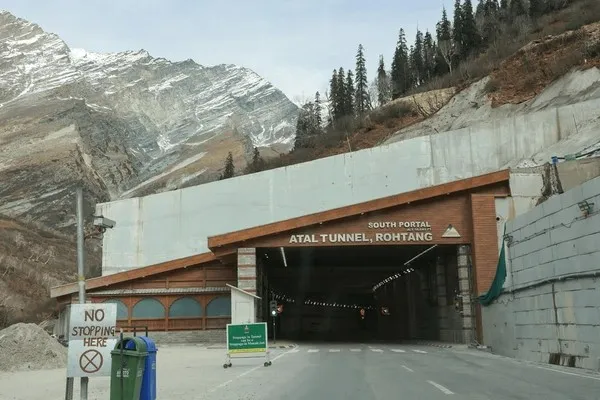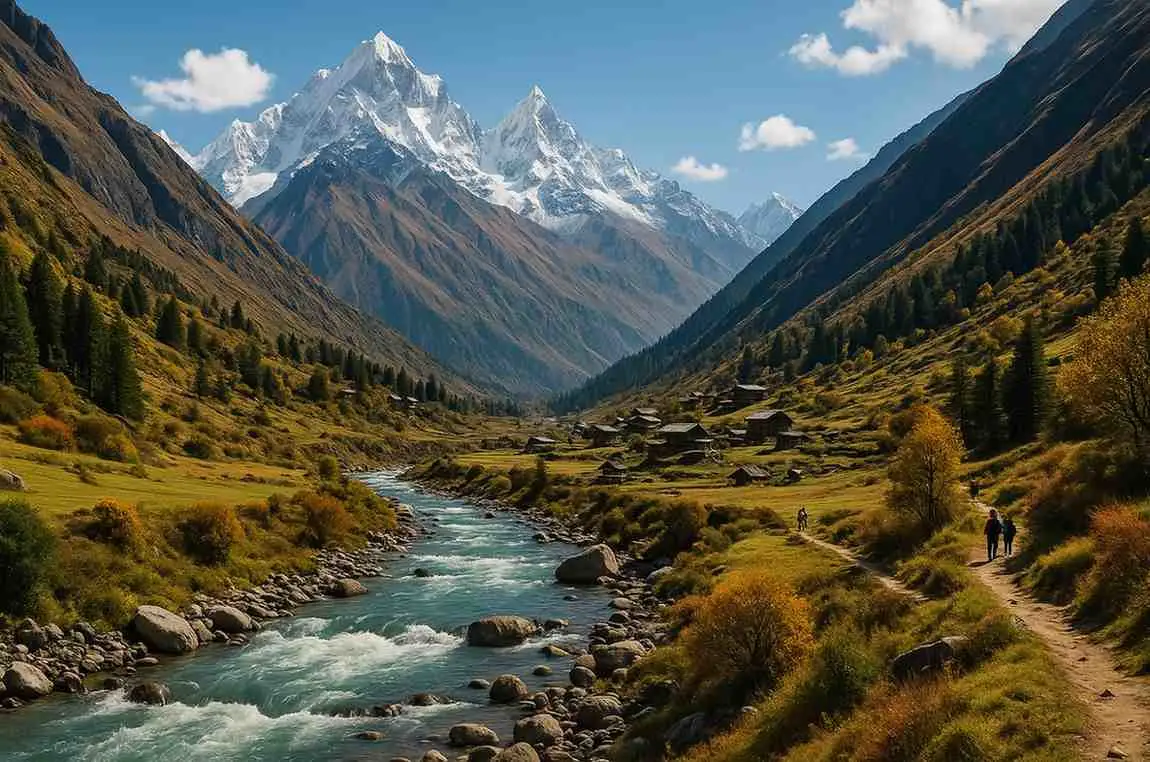The Atal Tunnel, located in the Himalayas in India, represents a remarkable milestone in modern engineering and is a portal to the beautiful regions of Lahaul and Ladakh. As the world’s longest highway tunnel above 10,000 feet, it has transformed connectivity, tourism, and economic development in incredibly remote regions.
Atal Tunnel Location and Its Geographical Importance
The Atal Tunnel, located in Himachal Pradesh, connects Manali directly to the Lahaul Valley, greatly reducing time of travel time. The tunnel avoids the dangerous Rohtang Pass and extends Himachal Pradesh to Ladakh, reducing each journey by 46 km and four to five hours. This important infrastructure adds to regional connectivity profoundly and contributes to social and economic development.
Atal Tunnel History and Background
The Atal Tunnel has had a vision since the early 2000s for enabling all-weather interconnectivity to the reachable parts of the Lahaul and Spiti valleys. Former Prime Minister Atal Bihari Vajpayee was an ardent initiate of this infrastructure project, laying the foundation stone in 2002. After many interventions and challenges, the project has successfully culminated in the example of urbanisation, and the project was inaugurated on the 3rd of October 2020.
Atal Tunnel Construction & Engineering Facts
The Atal Tunnel spans 9.02 kilometers and reaches an altitude of more than 10,000 feet. It is a single-tube, horseshoe-shaped tunnel with two lanes. The construction teams worked through some very tough challenges, such as inclement weather, landslides, and water infiltration into the tunnel to get to the project. The Border Roads Organisation (BRO) and other organizations used advanced technologies and some advanced materials as part of the construction to ensure the tunnel’s strength and integrity.
Atal Tunnel Features & Technical Facts
The Atal Tunnel has a width of 10 meters for an 8-meter-wide lane in the center and a footpath on either side that is one meter wide. A semi-transverse ventilation system is also in the tunnel to ensure fresh air will be supplied throughout the full length of the tunnel. The emergency tunnel is below the main tunnel and is 2.25 meters tall and 3.6 meters wide. Fire hydrants are placed at intervals along the tunnel. There is a public announcement system, CCTV cameras and pollution sensor systems are also in place to monitor traffic and air quality in the tunnel to ensure a safer overall system.
The Benefits and Implications of the Atal Tunnel
● Time Saving Travel:
This tunnel has cut our travel time from Manali to Leh by four to five hours. It will provide travelers and tourists with easier access to a better travel route around this area.
● Boost in Tourism:
With an improved travel route to Lahaul-Spiti and Ladakh tourism, it has significantly improved tourism and is taking off in local economies and local cultures.
● Economic Development Opportunity:
Improved connectivity will ensure improved access to local businesses, agri-businesses, trade, and economic development.
● Strategic Importance for Defence:
The tunnel allows the Indian military to access border areas more efficiently and reliably, which will help improve national security, operational planning, and deployment.
Challenges and Future Maintenance of the Atal Tunnel
While the tunnel offers benefits to the travel community, it also has challenges such as heavy snowfall, landslides, and road accessibility due to extreme weather conditions of extremes. Routine maintenance is critical to keep the tunnel operational all year, and plans are being considered to build more infrastructure improvements for additional connectivity and safety.
Tourist Attractions and Travel Guide
The Atal Tunnel opened up the travel access, to a lot of beautiful places that you can access with the tunnel!
Atal Tunnel Nearby Attractions:
The visitor has the opportunity to visit beautiful Solang Valley, historic Rohtang Pass, peaceful Keylong, and attractive Sissu, among others.
Best Time to Visit the Atal Tunnel
The tunnel traverses through all weather conditions, but the weather is pleasant from June to September, and the mountains are less rainy and will have clearer skies.
Travel Tips: Tourists and adventurers should acclimatize to altitude, carry more clothing due to the weather, and get their vehicles ready for the specimens necessarily applicable mountain climate.
Conclusion
The Atal Tunnel stands as a monumental achievement, significantly impacting Himachal Pradesh and India’s connectivity and development. It serves as a model for future high-altitude infrastructure projects, promising long-term benefits for regional growth, tourism, and strategic preparedness.
FAQ
1. What is the Atal Tunnel famous for?
The Atal Tunnel is renowned for being the world’s longest highway tunnel above 10,000 feet, significantly reducing travel time between Manali and Leh and providing all-weather connectivity to remote regions.
2. Is the Atal Tunnel open 24 hours?
Yes, the Atal Tunnel is open 24 hours a day, allowing uninterrupted travel between Manali and the Lahaul-Spiti valley.
3. Is the Atal Tunnel the longest in India?
Yes, at 9.02 kilometers, the Atal Tunnel is currently the longest highway tunnel in India.
4. Which two cities are connected by the Atal Tunnel?
The Atal Tunnel connects the cities of Manali in Himachal Pradesh to Leh in Ladakh, significantly improving accessibility between these regions.
Note: Information is based on available data as of 2025. Travelers are advised to check current conditions and travel advisories before planning their journey.






